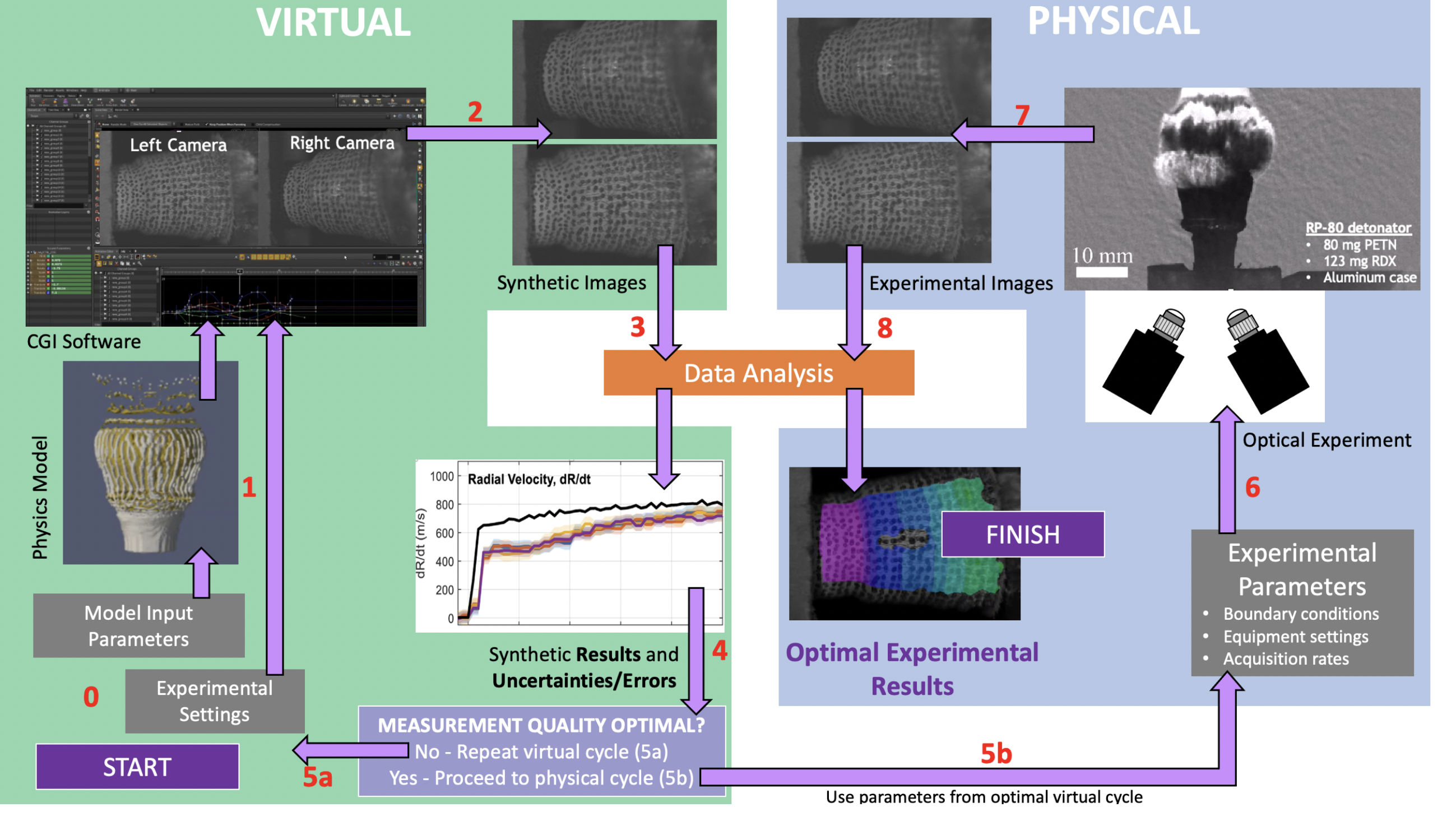This project aims to establish a theoretical framework to design scientific experiments starting with the visualization of the results (in this case, visualization of data represented as images) and working backwards to optimize experimental parameters to drastically increase information gain and decrease costs. The goal of this work is to use photo-realistic, model-based, synthetic visualization to enable a drastic leap forward for image-based experiments of complex or extreme events. The combination of optimal experimental design theory and post-optimality sensitivity analysis will be used to maximize scientific discovery in service of decision-making. Post-optimality sensitivity analysis will also elucidate model inadequacies and sources of bias by probing the discrepancies between the ab initio visualization (expected or speculative results) and the actual results of the experiment, in addition to guiding analysts to the most important features responsible for the phenomena observed in the visualization.
Visualization will play two important roles in this project: serving as the center piece of the virtualiza- tion of the experimental design and helping analysts make decisions based on the guidance provided by the sensitivity analysis tools we will develop. We will develop a methodology that will increase the in- formation content (and consequently reduce uncertainty) content of physical experiments. Our approach is rooted in concepts from optimal experimental design (OED) theory in which the data collection is designed to extract data most informative to the underlying inverse problem.
 |
| Ab Initio Visualization Framework and Associated Research Thrusts. The framework involves exploiting virtual environments to optimize experiments using advanced CGI visualizations, optimal experimental design, and sensitivity analysis. |
